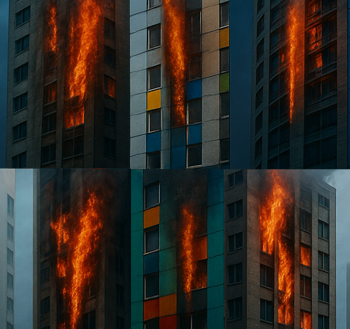Codes
The word 'code' in very general terms refers to a set of words, numbers or signs that convey or communicate a message, and might contain a set of rules, instructions or expressions.
For example:
- A code of conduct might be a generally accepted instruction for how to behave personally or professionally.
- A code of practice might be a generally accepted instruction for how an organisation or individual practices their profession.
- Computer code is a set of instructions for a computer, for which there are many variations.
- A criminal code (or penal code) is a collection of documents that relate to criminal law.
- Morse code is a known system of signals, letters or symbols used for sending messages - a secret code is the same where the system is withheld.
- A genetic code is a set of set of three-letter combinations that express how Deoxyribonucleic acid (DNA) and Ribonucleic acid (RNA) molecules carry genetic information in living cells.
- A post or zip code describes the location of a street, part of street, single address, or group of properties.
- A design code might be a set of design criteria or design parameters that should be followed in the design and planning of for example the built environment.
- A building code might be a set of rules that specify standards for the construction of buildings.
Many other examples and references to codes and theories exist throughout history and within the modern context. Some significant ones in history include hieroglyphics, Caesar shift, the De Vinci code, Alberti’s disk, the Shugborough inscription or the Vigenère square. In a more modern context codes such as boring, salt mine and radioactive might be referred to in programming design.
Code theory is the broad study of properties and applications of codes, often defining four different types; source codes, channel codes, cryptographic codes and line codes.
In the context of the design and construction of buildings, professional codes of conduct and practice, postcodes, design codes and building codes may perhaps be the most relevant, whilst the increased computerisation of the building design, construction and servicing industries mean computer coding is of increasing relevance to the sector.
[edit] Related articles on Designing Buildings
- Building codes.
- Building regulations.
- Consultation opens for code of practice for fire risk appraisal and assessment of external wall construction.
- Design review.
- Design code.
- Future Homes Standard.
- National Model Design Code.
- National planning policy framework NPPF.
- International Building Code (IBC).
- International Code Council ICC.
- International Existing Building Code (IEBC)
- International Residential Code (IRC).
- International Zoning Code (IZC).
- High-tech architecture.
- Performance specification.
- Planning permission.
- Structural engineering codes.
- Meaning of smart in the construction industry.
- The role of codes, standards and approvals in delivering fire safety.
- What approvals are needed before construction begins.
- Zoning in the United States.
Featured articles and news
Government consultations for the summer of 2025
A year of Labour, past and present consultations on the environment, the built environment, training and tax.
CMA competitiveness probe of major housing developers
100 million affordable housing contributions committed with further consultation published.
Homes England supports Greencore Homes
42 new build affordable sustainable homes in Oxfordshire.
Zero carbon social housing: unlocking brownfield potential
Seven ZEDpod strategies for brownfield housing success.
CIOB report; a blueprint for SDGs and the built environment
Pairing the Sustainable Development Goals with projects.
Types, tests, standards and fires relating to external cladding
Brief descriptions with an extensive list of fires for review.
Latest Build UK Building Safety Regime explainer published
Key elements in one short, now updated document.
UKGBC launch the UK Climate Resilience Roadmap
First guidance of its kind on direct climate impacts for the built environment and how it can adapt.
CLC Health, Safety and Wellbeing Strategy 2025
Launched by the Minister for Industry to look at fatalities on site, improving mental health and other issues.
One of the most impressive Victorian architects. Book review.
Common Assessment Standard now with building safety
New CAS update now includes mandatory building safety questions.
RTPI leader to become new CIOB Chief Executive Officer
Dr Victoria Hills MRTPI, FICE to take over after Caroline Gumble’s departure.
Social and affordable housing, a long term plan for delivery
The “Delivering a Decade of Renewal for Social and Affordable Housing” strategy sets out future path.
A change to adoptive architecture
Effects of global weather warming on architectural detailing, material choice and human interaction.
The proposed publicly owned and backed subsidiary of Homes England, to facilitate new homes.
How big is the problem and what can we do to mitigate the effects?
Overheating guidance and tools for building designers
A number of cool guides to help with the heat.
The UK's Modern Industrial Strategy: A 10 year plan
Previous consultation criticism, current key elements and general support with some persisting reservations.
Building Safety Regulator reforms
New roles, new staff and a new fast track service pave the way for a single construction regulator.
























